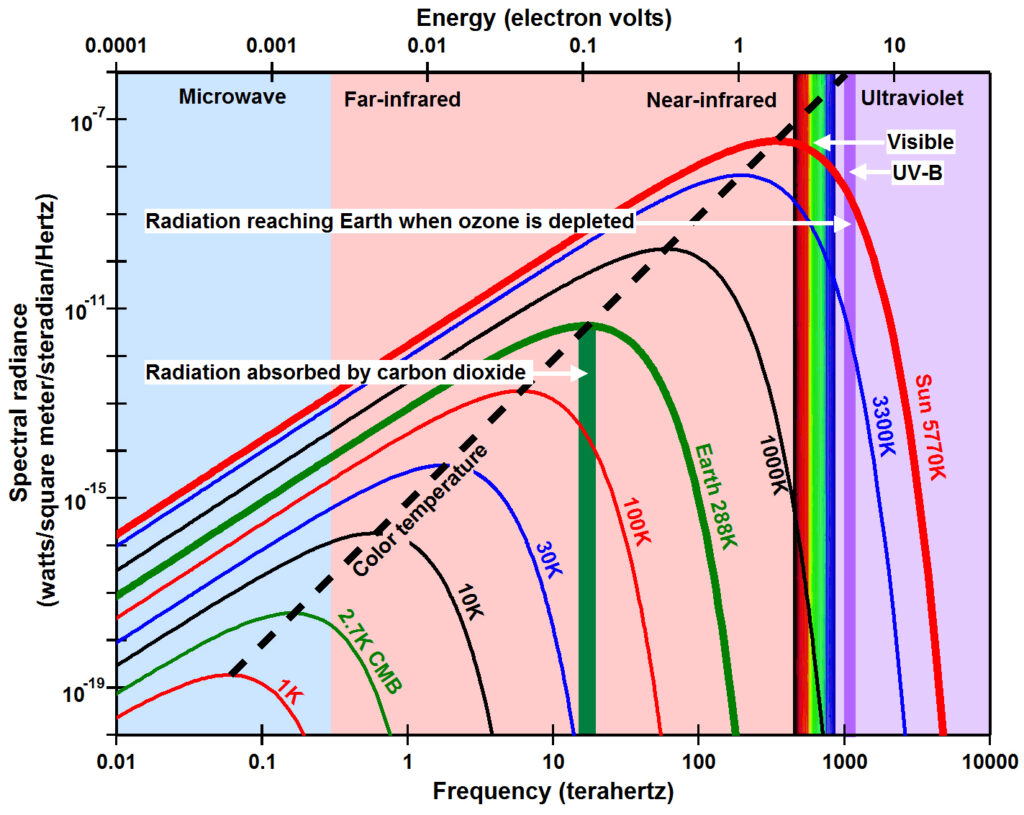Planck’s Law

Spectral radiance, the amount of radiation at each frequency, increases at every frequency and especially at higher frequencies as a body of matter warms. This distribution is approximated by Planck’s law except units on the y-axis should not include watts because, for electromagnetic radiation, energy (watts) is equal to frequency times the Planck constant and is thus plotted on the x-axis shown at the top in electron volts.
Note that a warmer body always has more spectral radiance at every frequency than a cooler body and that the frequency of the peak in spectral radiance increases in both frequency and spectral radiance with increasing temperature (the dashed black line known as Wien’s displacement law).
Peak spectral radiance can be thought of as the “color temperature” of radiation, the maximum temperature to which a black body could be raised when enough of that radiation was available. The color temperature is 288K for radiation from Earth (vertical green bar), 3300K for radiation from the filament of an incandescent light bulb, 5770K for radiation from the sun, and 16,500K for the band of ultraviolet-B energy reaching Earth when ozone is depleted (vertical violet bar). To increase the temperature of a black body, you must increase the color temperature. A body of matter can only be warmed by absorbing radiation that has a higher color temperature than its own. Ultraviolet-B radiation penetrating to Earth when ozone is depleted (vertical violet bar) has 57 times the color temperature of Earth.